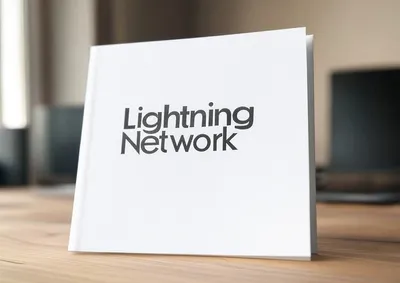The Future of Bitcoin-Powered Digital Assets - Taproot Assets Explained
Learn how the Taproot Protocol is transforming the Bitcoin blockchain for asset issuance and Lightning Network transactions.
•
6 min read

Bitcoin, the world’s leading cryptocurrency, continues to evolve as developers push the boundaries of its capabilities. One of the latest innovations promising to transform the blockchain landscape is Taproot Assets, a Taproot-powered protocol that allows for the issuance of digital assets, such as stablecoins, NFTs, or other types of tokens on the Bitcoin network. Unlike earlier solutions like Counterparty, Taproot Assets enables the transfer of assets through the Lightning Network (LN), benefiting from its instant, low-cost, and high-volume transactions.
Rolled out on the mainnet by Lightning Labs in the summer of 2024, Taproot Assets is leveraging both Bitcoin’s security and Lightning’s speed, promising to bring a new level of efficiency, privacy, and scalability to asset transactions. Let’s dive deeper into how this protocol works and why it could be a game-changer for Bitcoin.
A Foundation Built on Taproot
Taproot, Bitcoin’s 2021 upgrade, forms the backbone of the Taproot Assets protocol, enhancing Bitcoin’s ability to execute complex transactions more efficiently by improving privacy and reducing transaction size. Bitcoin Core developer Greg Maxwell first proposed the concept of Taproot in 2018, and other cryptographers expanded on his work in the following years. By the time Taproot was put to a vote, developers packaged it with three Bitcoin Improvement Proposals (BIP-340, BIP-341, and BIP-342). Crucially, Taproot was designed as a soft fork, meaning it was backward-compatible with the existing Bitcoin blockchain. This allowed nodes that didn’t opt into the upgrade to still process Bitcoin transactions without disruption.
The Schnorr/Taproot proposal is now published as BIPs 340, 341, and 342; see https://t.co/33uiulO8RA
— Pieter Wuille (@pwuille) January 24, 2020
Note that the assignment of BIP numbers is not any kind of stamp of approval; it just means the process was followed (which includes some amount of public discussion).
Unlike a hard fork, which would have introduced new rules or created a separate cryptocurrency network (as seen with Bitcoin Cash in 2017), Taproot didn’t fundamentally change Bitcoin’s structure. Instead, it enhanced Bitcoin's capabilities without splitting the network. Taproot was ultimately activated in November 2021, opening the door for developers to integrate new features. A key highlight of the Taproot upgrade was the introduction of Schnorr Signatures, a cryptographic innovation that allows multiple signature inputs to be combined into a single signature. This signature aggregation reduces transaction size, making the process more efficient, while also enhancing privacy on the Bitcoin network by concealing individual signatures within the aggregated output. This is especially useful for complex multi-step transactions, such as those needed to transfer assets across multiple nodes on the Lightning Network.
Another of Taproot’s standout features is its ability to boost privacy by making all transactions appear identical on the blockchain. This is achieved through Merklized Abstract Syntax Trees (MAST), which allow users to create complex spending rules without revealing those conditions until they are executed.Additionally, Taproot introduced Tapscript, a new scripting language for Bitcoin, which enhances both privacy and functionality. With this upgrade, complex smart contracts can be condensed into a single public key, making them less visible on the blockchain and improving scalability by combining multiple outputs into one.
Beyond privacy and efficiency, Taproot opened the door for more advanced use cases on Bitcoin, including fungible token protocols like BRC-20 and Bitcoin Runes, as well as non-fungible tokens (NFTs) created through the Ordinals protocol.
What Sets Taproot Assets Apart
Unlike previous attempts to integrate assets into the Bitcoin network, Taproot Assets is designed to work natively with Bitcoin and the Lightning Network. Assets created using this protocol can be placed directly into Lightning Network channels, where they can interact with regular Bitcoin transactions. This allows for atomic swaps—instant conversions between Bitcoin and Taproot Assets—creating a smooth flow of transactions across the entire network.
The Underlying Technology: Sparse-Merkle and Merkle-Sum Trees
Taproot Assets relies on Sparse-Merkle Trees and Merkle-Sum Trees to ensure fast, efficient, and private management of transaction data. Sparse-Merkle Trees allow users to quickly retrieve and update asset data without needing to reference the entire blockchain. This is key for maintaining privacy and speed in asset transfers.
The Merkle-Sum Tree plays a critical role in ensuring the integrity of assets issued through the protocol. It ensures that assets are not duplicated or inflated during transfers, providing transparency and trustworthiness to users. By proving that each asset transfer is legitimate and no excess tokens have been created, this technology ensures the system’s long-term reliability.
Decentralized Data Storage and Verification
A major strength of Taproot Assets lies in its approach to storage and verification. Instead of storing all transaction data on the blockchain, which can be inefficient, participants can store asset-related data off-chain in local databases or with shared repositories known as Universes. Universes work similarly to Git repositories, where users can access the necessary data to verify transactions without overwhelming the blockchain.
To verify an asset’s legitimacy, users trace its history back to its genesis output, the original creation point of the asset. This is done through a gossip layer, where transaction history is shared and verified among participants. Each user cross-references this data with their own blockchain copy, ensuring that the asset they are handling has a clear, validated history.
This decentralized approach to storing and verifying data enables Taproot Assets to scale efficiently while keeping the Bitcoin blockchain from becoming overloaded with unnecessary information. It’s an innovative way to handle large volumes of transactions without sacrificing Bitcoin’s performance.
How it Works
When creating a new asset, Taproot Assets generates the required witness data, assigns the asset to a key you control, and records the minting transaction on the Bitcoin blockchain via a UTXO (unspent transaction output).
The outpoint consumed by this minting transaction becomes the "genesis point," serving as the asset's unique identifier. You can then transfer the asset to a new recipient, who provides you with their Taproot Asset address, containing the necessary details for the transfer.
To move assets, witness data from the previous transaction is re-embedded into one or more Taproot outputs, and the required information is shared with the recipient. Much like Bitcoin transactions, any remaining balance after the transfer is sent back to the sender as change.
Wallets
Several wallets support the Taproot Assets protocol, enabling users to manage and transact with digital assets on the Bitcoin blockchain. Here are some notable options:
- Tiramisu Wallet: Mint, send, Exchange
- Tao Wallet: USD for everyone
- Joltz Wallet
- UXUY
- Speed
- Bitmask
- Swiss Knife
Expanding Bitcoin’s Capabilities

Expanding Bitcoin’s capabilities through Taproot Assets opens up a broad range of potential use cases, both for businesses and everyday users. On the business side, Taproot Assets could enable the issuance of tokenized assets like stocks, bonds, and real-world assets (RWAs), creating opportunities for asset management, decentralized finance (DeFi) services, and even derivative trading. Custodial services could also evolve, allowing businesses to manage and secure digital assets on behalf of clients, while virtual machines (VM) and cloud services could support the development of decentralized applications (dApps) running on Bitcoin's infrastructure.
Exchanges—both centralized and decentralized—could integrate Taproot Assets, enabling atomic swaps or decentralized exchanges (DEXs) through Lightning nodes, further facilitating trading. Businesses might also use Taproot Assets as collateral in lending or financing scenarios, adding a layer of security and transparency. Stablecoins, both centralized (like USDC and USDT) and algorithmic, could be issued and transacted on the Bitcoin network, enhancing Bitcoin’s role in global financial systems.
For individual users, Taproot Assets unlock new opportunities, such as participating in NFT marketplaces, crowdfunding projects, or engaging in decentralized social media platforms where payments could be accepted via stablecoins or other tokens. The ability to mint tokens, use Taproot-enabled wallets, and exchange assets through services like Lightning Service Providers makes Bitcoin more accessible for various day-to-day transactions. Additionally, users can benefit from innovative technologies like synthetic stablecoins, system-of-points rewards programs, and integration with AI-compatible tech, all of which can be used in applications ranging from gaming (GameFi) to identity verification systems like Nostr.
Importantly, with the Taproot Assets Protocol providing for the mechanisms of a functional market with low technical barriers to entry, project founders can also explore these areas to attract funding through unique offerings that appeal to various investor interests.
“With the design of the Taproot Assets protocol, instead of each asset issuer needing to bootstrap their own sub-network of liquidity and routing nodes, all issuers can leverage the existing network effects of the 5,400 bitcoin allocated to the Lightning Network,” Lightning Labs said at the time of the protocol’s launch. “With Taproot Assets on Lightning, assets route through bitcoin, serving as a global routing currency.”
As the technology matures and adoption grows, Taproot Assets may very well transform Bitcoin into a more versatile and capable network, ensuring its continued relevance in the world of crypto. Keep an eye on this space—Taproot Assets could be the key to unlocking Bitcoin’s full potential.

Stroom DAO
View our other posts

Bitcoin Without Borders: Unlocking Bitcoin's Multi-Chain Potential
Since the birthday of the first Bitcoin block on January 3, 2009, a new era of financial assets has begun - the cryptocurrency era. Unmatched security, permissionlessness, and decentralization cemented Bitcoin'
Stroom DAO

Lightning Network in 2025: Bitcoin’s Transformation into Everyday Money
Bitcoin’s Lightning Network is transforming from an experiment into a global payment system, making everyday transactions faster and cheaper.
Stroom DAO

Lightning Network: Celebrating 9 Years of Innovation
The Lightning Network whitepaper was unveiled on January 14, 2016, introducing a transformative layer atop Bitcoin for instant, scalable transactions.
Stroom DAO